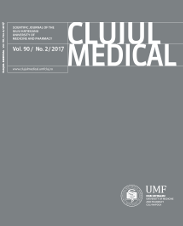THE VALUE OF LABORATORY TESTS IN THE DIAGNOSIS OF TUBERCULOSIS
DOI:
https://doi.org/10.15386/cjmed-650Keywords:
tuberculosis, bacteriological diagnosis, laboratory diagnosis, PCRAbstract
Background and aim. In the last decades, the inhabitants of the Romanian region known as Jiu Valley underwent changes in their social and economic status which determined changes in behaviour and health, which influenced their general health condition. One of the consequences was the exacerbation of tuberculosis. In order to control this situation, there was a need to increase the efficiency of diagnosis. This optimization can be reached by a better detection of mycobacterium infection, optimal isolation of strains and identification of the resistance of strains to antituberculous drugs.
Methods. In order to identify the best diagnostic modality, we compared the efficacy of the classical bacteriological diagnosis, still performed in the field, to the modern methods of molecular biology. The study included two groups, one represented by 213 patients who were investigated using the classical bacteriological methods, and 49 who were diagnosed using the PCR method.
Results. The tuberculosis patients who have been evaluated only with the classical bacteriological methods where diagnosed as TB positive and treated according to the national guidelines, which are in agreement with the international guidelines. The PCR diagnostic methods had a superior diagnostic value compared to the traditional bacteriological method.
Conclusions. The results revealed the superiority of the modern molecular biology methods based on PCR. However the bacteriological method remains useful in areas where PCR cannot be afforded.
Downloads
Published
How to Cite
Issue
Section
License
The authors are required to transfer the copyright of the published paper to the journal. This is done by agreeing to sign the Copyright Assignment Form. Whenever the case, authors are also required to send permissions to reproduce material (such as illustrations) from the copyright holder.

The papers published in the journal are licensed under a Creative Commons Attribution-NonCommercial-NoDerivatives 4.0 International License.

